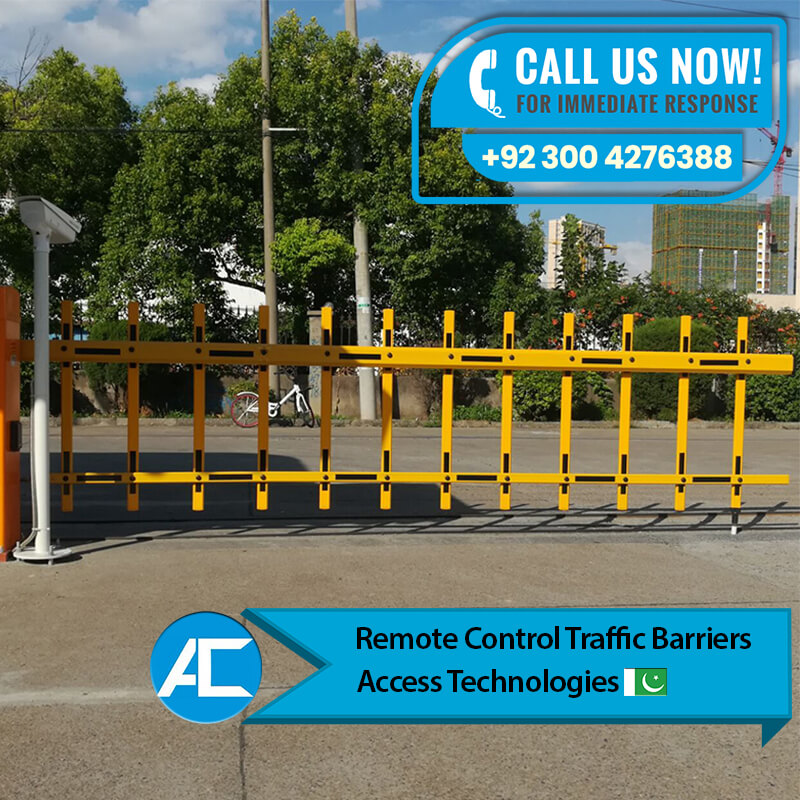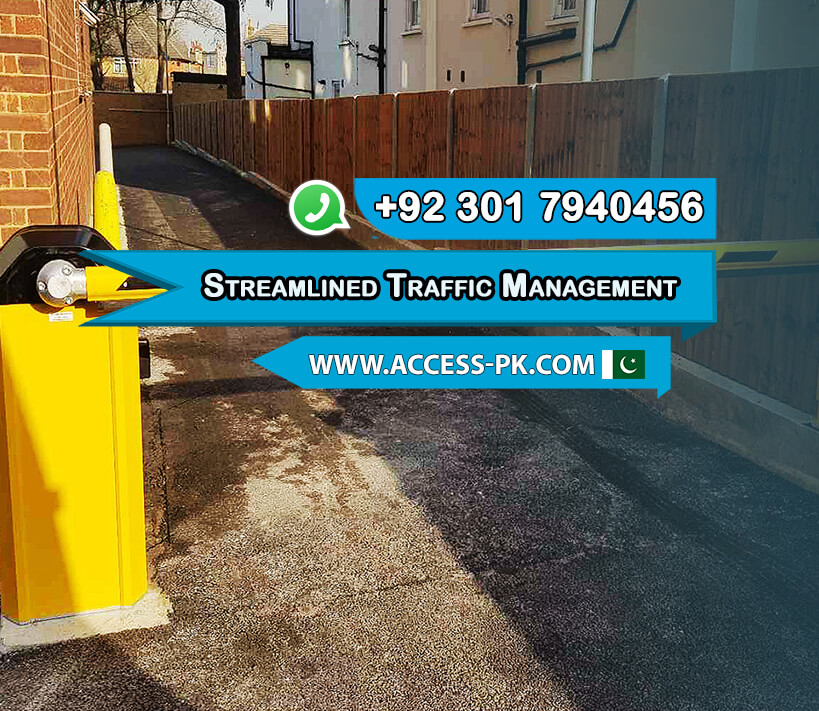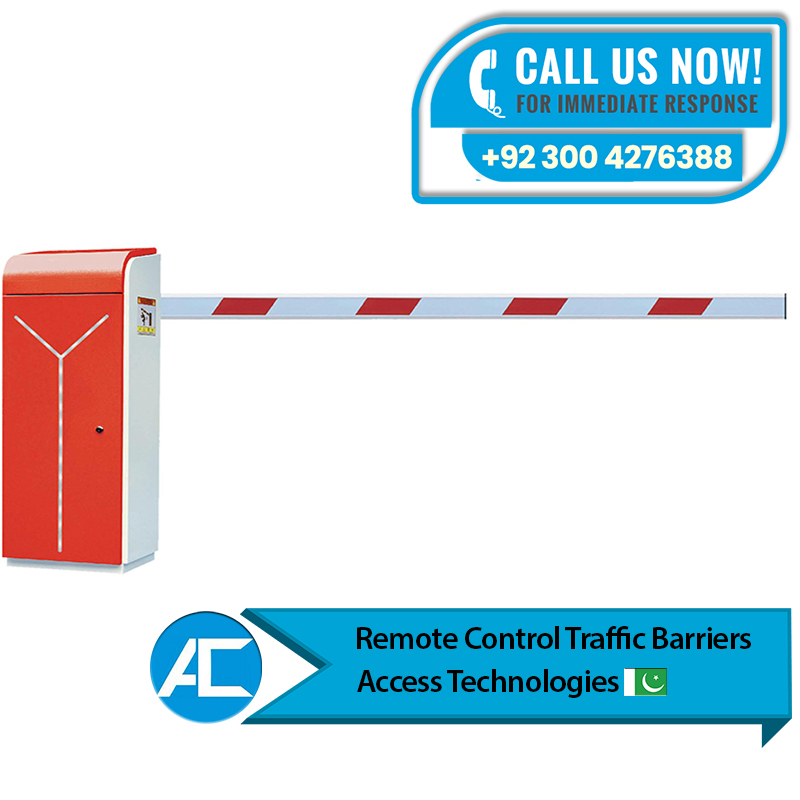Remote-controlled traffic barriers have emerged as a remarkable advancement in traffic management, revolutionizing how vehicular movement is controlled and directed. These innovative barriers, owned by Imran Rafi and offered by Access Technologies, are designed to be operated remotely through various technologies, such as smartphones and centralized control centers. This transition from traditional manual barriers to remote-controlled systems has significantly improved the efficiency and flexibility of traffic control methods.
One of the key advantages of remote-controlled traffic barriers is eliminating the need for on-site personnel. With the ability to be controlled from a distance, these barriers can be promptly adjusted in response to changing traffic conditions. For instance, during unexpected traffic congestion, the barriers can be swiftly lowered or raised to divert traffic and prevent further disruptions. This newfound flexibility ensures a smoother traffic flow and minimizes delays, enhancing overall road efficiency.
Moreover, integrating remote-controlled traffic barriers with modern technology enhances security measures and access control. These barriers can be equipped with advanced authentication methods, allowing only authorized personnel to operate them remotely.
Incorporating data-driven insights into traffic management is another stride in advancing these barriers. By synchronizing traffic flow data, remote-controlled barriers can make real-time informed decisions. This integration enables the barriers to adapt their opening and closing intervals based on current traffic conditions, optimizing the overall traffic management process. As a result, commuters experience reduced travel times, and traffic congestion is significantly mitigated.
In summary, advancing remote-controlled traffic barriers marks a pivotal shift in how traffic control is approached. With enhanced flexibility, heightened security measures, and data-driven decision-making, these barriers have demonstrated their potential to transform the efficiency and effectiveness of traffic management systems.
Enhancing Traffic Control Efficiency and Flexibility

The introduction of remote-controlled traffic barriers has notably improved traffic control efficiency and flexibility. This progress is especially clear in the smooth integration of advanced technologies, enabling remote management of barriers. This shift has replaced the reliance on manual intervention with a dynamic and responsive traffic management approach.
By enabling remote control, these barriers have significantly reduced the dependence on on-site personnel for barrier operation. This transformation enhances traffic control efficiency, as barriers can now be adjusted promptly and precisely from a remote location. This real-time adjustability becomes particularly advantageous in scenarios requiring immediate response, such as redirecting traffic during an accident or roadblock. As a result, traffic flow can be efficiently managed without unnecessary delays or disruptions.
Moreover, integrating remote-controlled traffic barriers with various devices, such as smartphones and tablets, contributes to their remarkable flexibility. These barriers can be operated from multiple locations, enabling traffic controllers to view traffic conditions and comprehensively make informed decisions. This flexibility translates into smoother traffic flow management, allowing quick adaptations to changing road conditions, construction zones, or special events.
In addition, applying remote-controlled traffic barriers in different settings underscores their adaptability. Whether used in urban areas, toll booths, or secured facilities, these barriers showcase their ability to cater to diverse traffic control needs. For instance, barriers can be programmed remotely during rush hours to regulate traffic flow efficiently, preventing congestion and reducing commuting times.
In conclusion, integrating remote-controlled traffic barriers has marked a substantial leap in the efficiency and flexibility of traffic control systems. The shift from manual to remote operation streamlines traffic management processes reduces dependency on physical presence, and fosters dynamic responses to changing traffic conditions.
Elevated Security Measures and Access Control

Implementing remote-controlled traffic barriers goes beyond mere traffic management; it introduces a new era of elevated security measures and advanced access control. These barriers bolster security protocols and enhance access control systems by seamlessly integrating state-of-the-art authentication technologies. This transition to heightened security is particularly evident in their ability to restrict barrier operation to authorized personnel only, effectively minimizing potential breaches.
One of the pivotal features of remote-controlled traffic barriers is their incorporation of advanced authentication methods. These methods, such as biometric recognition or secure access codes, ensure that only authorized individuals can remotely operate the barriers. This prevents unauthorized access to restricted areas and mitigates the risks associated with manual operation by unidentified personnel. The barriers become an integral part of the security infrastructure, acting as gatekeepers that respond solely to legitimate requests.
Furthermore, integrating remote-controlled barriers with access control systems marks a significant advancement in regulating entry to secure locations. The barriers can be seamlessly synchronized with security frameworks, such as surveillance cameras or personnel identification systems. This integration enables real-time verification of credentials before granting access, protecting against potential security breaches. The barriers’ ability to facilitate controlled entry and exit in high-security zones contributes substantially to maintaining secure environments.
Remote-controlled barriers are crucial in high-security zones like military bases. Authorized personnel remote control ensures entry for cleared individuals. In conclusion, introducing remote-controlled traffic barriers is not limited to enhancing traffic management; it ushers in a new era of heightened security measures and advanced access control. Through innovative authentication methods and integration with access control systems, these barriers create secure environments while efficiently managing traffic flow.
Streamlined Traffic Management through Data Integration
 The evolution of traffic management has taken a significant leap by integrating remote-controlled traffic barriers and data integration techniques. This innovative combination has ushered in a new era of streamlined traffic control, where real-time data insights drive decisions. By merging traffic flow data with barrier control mechanisms, these systems have transformed the efficiency and effectiveness of managing vehicular movement.
The evolution of traffic management has taken a significant leap by integrating remote-controlled traffic barriers and data integration techniques. This innovative combination has ushered in a new era of streamlined traffic control, where real-time data insights drive decisions. By merging traffic flow data with barrier control mechanisms, these systems have transformed the efficiency and effectiveness of managing vehicular movement.
One of the primary advantages of data integration in remote-controlled traffic barriers is the ability to make informed decisions based on real-time traffic conditions. These barriers can be synchronized with traffic flow data collected from various sensors and cameras along roadways. This integration empowers traffic controllers to assess the current traffic volume, congestion points, and overall road conditions.
The dynamic nature of data-driven traffic management is further highlighted by its adaptability to various scenarios.
In peak traffic hours, barriers can adapt opening/closing times based on vehicle influx, preventing gridlock and cutting travel times. Likewise, for emergencies or events, data-driven insights guide remote barrier operation, rerouting traffic and ensuring crowd control.
Furthermore, integrating data-driven insights into remote-controlled traffic barriers supports the concept of a smart city infrastructure. As cities strive to become more intelligent and interconnected, these systems are crucial in optimizing traffic patterns and reducing urban congestion. The barriers’ ability to respond to real-time data aligns with the vision of creating efficient, sustainable, and livable urban environments.
In conclusion, the fusion of remote-controlled traffic barriers and data integration techniques has revolutionized traffic management. These systems promote smoother traffic flow, minimize congestion, and enhance overall road efficiency by utilizing real-time traffic data to inform barrier control decisions.

national junior honor society essay help quality custom
essays writing essays services
help writing a descriptive essay online help with essay writing
expert essay writers